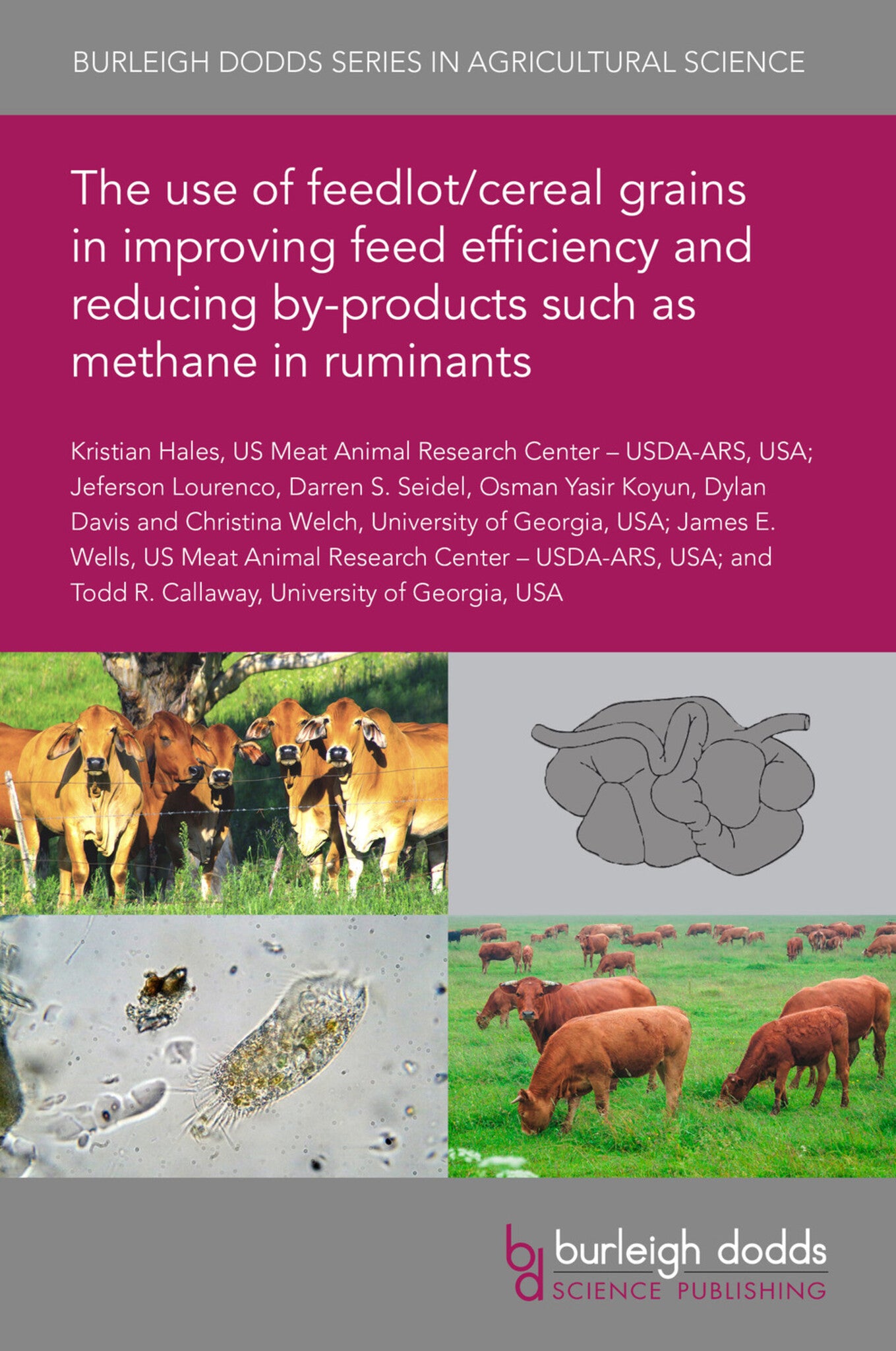We're sorry. An error has occurred
Please cancel or retry.
The use of feedlot/cereal grains in improving feed efficiency and reducing by-products such as methane in ruminants

Some error occured while loading the Quick View. Please close the Quick View and try reloading the page.
Couldn't load pickup availability
- Format:
-
22 June 2020


TECHNOLOGY & ENGINEERING / Agriculture / Animal Husbandry, Dairy farming, TECHNOLOGY & ENGINEERING / Agriculture / Sustainable Agriculture, Sustainable agriculture, Animal husbandry

1 Introduction 2 Types of cereal grains fed to cattle 3 Cereal grain production 4 Dietary factors affecting methane production by ruminants 5 The role of starch and forage in methane formation 6 H2 sinks in the rumen and methane production 7 Using cereal grains to improve feed efficiency and reduce methane production 8 Microbiology of cereal grain fermentation 9 Bacteria and archaea involved in fermentation 10 Feed retention time 11 Acidosis and other negative feed effects 12 Summary 13 Where to look for further information 14 References



